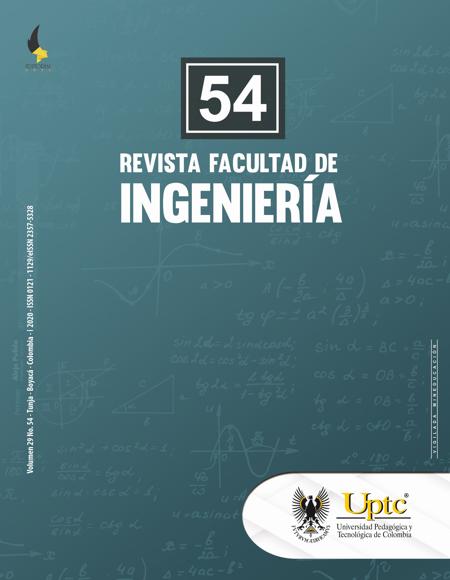Application of the Dynamic Compaction for Large Imprint Structures in Córdoba, Argentina

Abstract
The dynamic compaction method, very little spread in Argentina, has not been used in the city of Córdoba until this occasion. Its application in the “Bajo Grande Sewage Liquid Treatment Plant” has been a great technical and economic achievement. This article synthesizes geotechnical studies before the improvement, characterizes the dynamic compaction from the existing soil profile, and requirements of major works such as settlers and aeration tanks. Aspects of work control during its execution, data from soil studies after improvement, parameters of the mathematical model used to carry out the prognosis of seats according to the evaluated soil profile and measurements of validation of seats with the sedimentation tanks in operation are mentioned. Compaction was carried out by dropping a 10000 kg mass in free fall at a height of 15m from a crane, on points approximately 2.8 m apart. Two phases of several falls were executed allowing an increase in the relative density of the original soil to a maximum of 70%, reducing vertical settlements by 10%, decreasing angular distortion in half, doubling the bearing capacity, and reaching a maximum depth improvement near 6m. Then a ground leveling phase with mechanical compaction was carried out by project requirement. It could be concluded that the foundation of the construction with reinforced concrete stalls on the improved soil, presented a very superior technical-economic feasibility with respect to the alternative of a deep foundation with piles, which justified the execution of dynamic compaction in this work.
Keywords
dynamic compaction, soil improvement, Relative density, settlements, finite element, rayleigh
References
- L. Zhang, G. Yang, D. Zhang, Z. Wang, and J. Jin, “Field Test and Numerical Simulation of Dynamic Compaction of High Embankment Filled with Soil-Rock,” Advances in Civil Engineering, vol. 2019, e6040793, Sep. 2019. https://doi.org/10.1155/2019/6040793 DOI: https://doi.org/10.1155/2019/6040793
- R. G. Lukas, Geotechnical Engineering Circular No. 1: Dynamic Compaction, Washington D.C., FHWA-SA-97-037, 1995. https://www.fhwa.dot.gov/engineering/geotech/pubs/009754.pdf
- B. C. Slocombe, “Dynamic compaction”, in Ground Improvement, M. P. Moseley, and K. Kirsch, Eds. Nueva York: Spon Press, 2004, pp. 93-118. https://doi.org/10.1201/9780203489611 DOI: https://doi.org/10.4324/9780203305201_chapter_3
- J. Rondelet, Traite Theorique Et Pratique de l’Art de Batir: Avec Atlas de Plances, United States: Wentworth Press, 2018.
- L. Ménard, and Y. Broise, “Theoretical and practical aspect of dynamic consolidation,” Géotechnique, vol. 25(1), pp. 3-18, Mar. 1975. https://doi.org/10.1680/geot.1975.25.1.3 DOI: https://doi.org/10.1680/geot.1975.25.1.3
- P. W. Mayne, J. S. Jones, and J. C. Dumas, “Ground Response to Dynamic Compaction,” Journal of Geotechnical Engineering, vol. 110 (6), pp. 757-774, Jun. 1984. https://doi.org/10.1061/(ASCE)0733-9410(1984)110:6(757) DOI: https://doi.org/10.1061/(ASCE)0733-9410(1984)110:6(757)
- American Society for Testing and Materials, ASTM D-1586. Standard Test Method for Standard Penetration Test (SPT) and Split-Barrel Sampling of Soils, 2018. https://doi.org/10.1520/D1586_D1586M-18 DOI: https://doi.org/10.1520/D1586_D1586M-18
- J. Han, Principles and Practices of Ground Improvement. New Jersey: John Wiley & Sons, 2015.
- R. G. Lukas, Dynamic Compaction for Highway Construction, Department of Transportation, Federal Highway Administration, 1986. https://trid.trb.org/view/273838
- G. A. Leonards, R. D. Holtz, and W. A. Cutter, “Dynamic compaction of granular soils,” Transportation Research Record, vol. 749, pp. 10-13, 1980.
- J. A. Charles, D. Burford, and K. S. Watts, “Field studies of the effectiveness of dynamic consolidation,” International Journal of Rock Mechanics and Mining Sciences & Geomechanics Abstracts, vol. 21 (3), A117, Jun. 1984. https://doi.org/10.1016/0148-9062(84)91887-4 DOI: https://doi.org/10.1016/0148-9062(84)91887-4
- B. Scott, M. Jaksa, and P. Mitchell, “Depth of influence of rolling dynamic compaction,” in Proceedings of the Institution of Civil Engineers - Ground Improvement, pp. 1-10, Apr. 2019. https://doi.org/10.1680/jgrim.18.00117 DOI: https://doi.org/10.1680/jgrim.18.00117
- American Society for Testing and Materials, ASTM D-1556. Standard Test Method for Density and Unit Weight of Soil in Place by Sand-Cone Method, 2015. https://doi.org/10.1520/D1556_D1556M-15E01 DOI: https://doi.org/10.1520/D1556_D1556M-15E01
- American Society for Testing and Materials, ASTM D-1557. Standard Test Methods for Laboratory Compaction Characteristics of Soil Using Modified Effort (56,000 ft-lbf/ft3 (2,700 kN-m/m3)), 2012. https://doi.org/10.1520/D1557-12E01 DOI: https://doi.org/10.1520/D1557-12E01
- International Society for Soil Mechanics and Foundation Engineering, Report of the ISSMFE Technical Committee on Penetration Testing of Soils–TC 16, with Reference Test Procedures, CPT-SPT-DP-WST. Swedish Geotechnical Society, 1989.
- GeoSlope International, Sigma/W 8.16.2.14053 - Serial number 93454, 1991. https://www.geoslope.com/products/sigma-w
- L. Bjerrum, “Allowable settlement of structures,” in European Conference on Soil Mechanics and Geotechnical Engineering, Wiesbaden, Germany, 1963, pp. 135-139.
- J. E. Bowles, Foundation analysis and design. Nueva York: Mc Graw Hill, 1997.